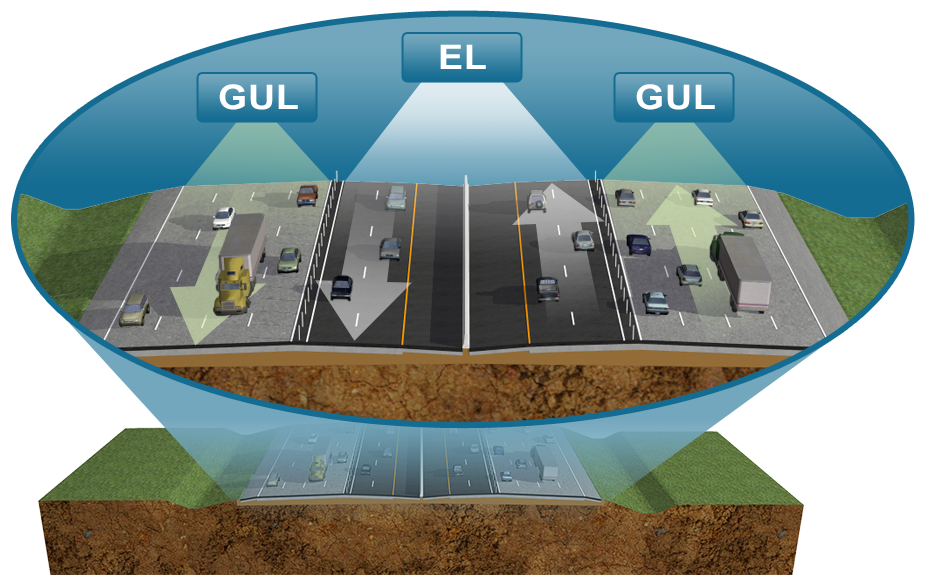Q: What types of improvements are being considered?
A: The studies considered ultimate improvements. The ultimate improvements include adding express lanes to serve regional travelers, lanes for Bus Rapid Transit (BRT) or other transit modes. Additional improvements include interchange modifications or reconfiguration.
Q: How far into the future will the studies consider?
A: Along with these PD&E studies that consider the need for improvements through year 2045, FDOT has prepared a “vision” for the I-75 corridor. This vision took a long-range view (as much as 50 years into the future) to help establish goals for the corridor consistent with FDOT’s core mission of providing safe and efficient movement of people and goods. A Vision Workshop was held on February 9, 2009. Nearly 20 local groups were represented. Please click here to find out more information regarding the Vision Workshop.
Q: What is the SIS?
A: The Strategic Intermodal System (SIS) is a statewide network of high-priority transportation facilities including highways, airports, seaports, railroads, and bus stations.
Q: What Happens Next?
A: A 2nd Public Hearing is scheduled for January 27, 2022 to present the alternatives being considered and allow the public to express concerns and make comments to be included in the project files. After the Public Hearing, the project team will review all public input received, document the Preferred Alternative and finalize the PD&E study documents. The PD&E study is expected to be approved in Summer 2022. Individuals on the project mailing list will be notified of the approved alternative. The project will move forward to the Design Phase, when detailed plans are prepared for construction. The FDOT has not programmed funding for this project within its 5-Year Work Program for Design, Right-of-Way (ROW), and Construction.
Q: What is the Preferred Build Alternative?
A: The Preferred Build Alternative includes 2 Express Lanes (EL), to serve regional travelers, and 3 General Use Lanes (GUL) which are separated by a 4-ft buffer in each direction. It also includes a median barrier separating northbound and southbound traffic. By widening to the inside, three lanes and the outside shoulder in each direction would be reused in the proposed typical along the majority of the approximately 18 mile northern project and 23 mile southern project, resulting in a significant construction and right-of-way cost savings. Interchange modifications and reconfigurations at SR 674, Gibsonton Drive, US 301, the Selmon Expressway, State Road 60, Martin Luther King, Jr. Boulevard, I-4, Fowler Avenue and Fletcher Avenue are also under consideration. Please click here to see materials that were on display at the public hearing.
Q: What are express lanes and general use lanes?
A: The Express Lane (EL) concept is basically an “interstate within an interstate” where a set of lanes within the interstate are separated from the General Use Lanes (GULs). The GULs can be used by any vehicle. The ELs and GULs are separated by a 4-foot buffer with delineators which could include plastic pylons or other devices. Interchange access from the ELs may be provided less frequently than that of the GULs to ease travel for those making longer regional trips. The express lanes could be managed by access, tolls, vehicle type, or vehicle occupancy. Future studies will evaluate how the express lanes are managed.

Q: Can the Interchange improvements be made before building the EL’s?
A: The preferred alternatives for these projects were considered to address future traffic projections for year 2045. Now that the preferred alternatives have been selected through the PD&E process, we are looking for opportunities for interim operational projects to ease existing or near-term traffic issues. Building the ultimate projects at one time will be very costly; therefore, the FDOT will consider building interim or separate parts of these projects over time, as smaller amounts of funds become available. These types of improvements could range from adding new lanes along certain sections of I-75 or the ramps, to altering traffic configuration or movements within some interchanges. These interim improvements will be coordinated with the ultimate conceptual designs to minimize reconstruction when the ultimate preferred alternatives are constructed.
Q: What are the environmental effects of the Preferred Alternative?
A: Potential impacts to the natural, physical, social and cultural environment were evaluated with respect to the preferred alternatives. As part of this process, several separate reports were prepared which document the anticipated impacts. These reports included: Natural Resources Evaluation, Water Quality Impact Evaluation Checklist, Contamination Screening Evaluation Report, Cultural Resource Assessment Survey, Noise Study Report, and Air Quality Technical Memorandum. Please click here to see copies of the Draft Study reports.
